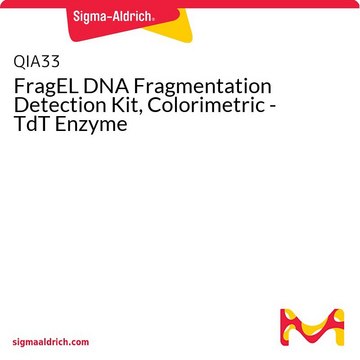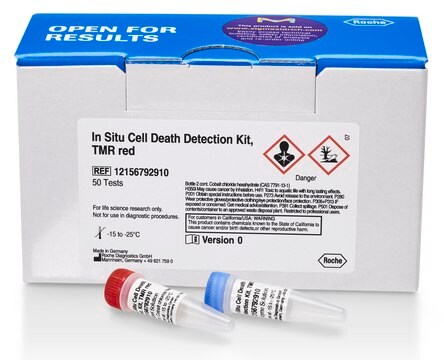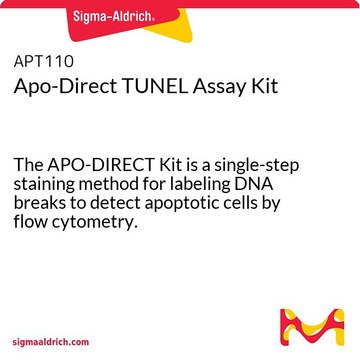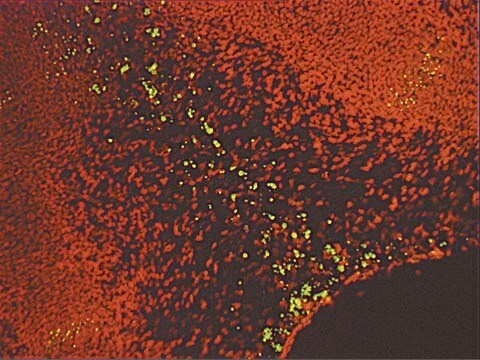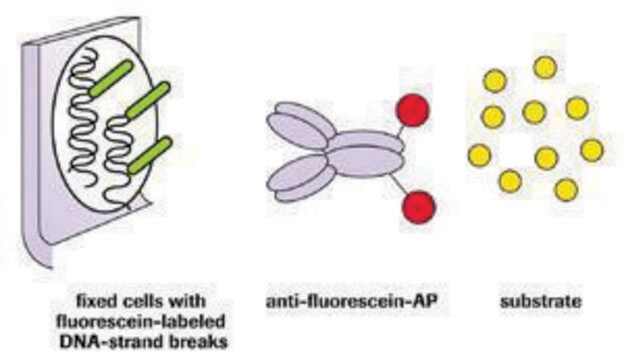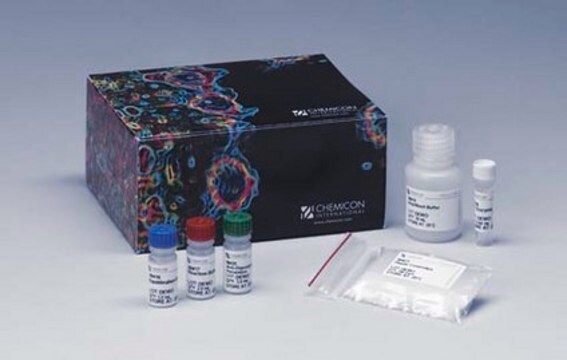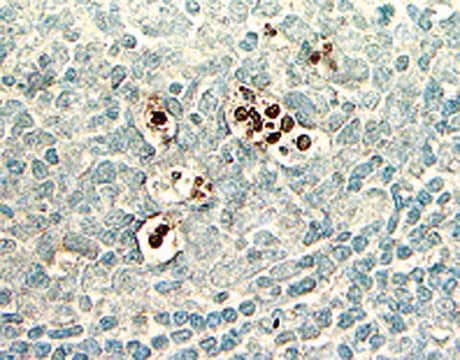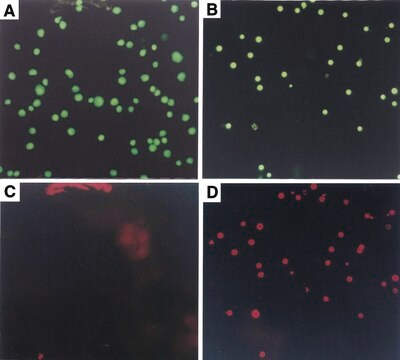QIA39
FragEL DNA Fragmentation Detection Kit, Fluorescent - TdT Enzyme
Sinónimos:
TUNEL Assay
About This Item
Productos recomendados
usage
sufficient for 50 tests
Quality Level
species reactivity (predicted by homology)
all
manufacturer/tradename
Calbiochem®
storage condition
OK to freeze
avoid repeated freeze/thaw cycles
technique(s)
flow cytometry: suitable
input
sample type cell suspension(s)
sample type frozen section(s)
sample type paraffin section(s)
sample type fixed-cell preparation(s)
detection method
fluorometric
shipped in
wet ice
storage temp.
−20°C
General description
Components
Warning
Specifications
Principle
Storage and Stability
Other Notes
Frey, T. 1997. Cytometry28, 253.
Shapiro, H.M. 1995. Practical Flow Cytometry, Third Edition. Wiley-Liss Inc., New York, New York.
Darzynkiewicz, Z., et al. 1992. Cytometry13, 795.
Gavrieli, Y., et al. 1992. J. Cell Biol.119, 493.
Fawthrop, D. J., et al. 1991. Arch. Toxicol.65, 437.
Martin, S.J., et al. 1990. J. Immunology145, 1859.
Wyllie, A. H. 1980. Nature284, 555.
Kerr, J. F. R., et al. 1972. Br. J. Cancer26, 239.
Legal Information
signalword
Danger
Hazard Classifications
Acute Tox. 4 Inhalation - Acute Tox. 4 Oral - Aquatic Chronic 2 - Carc. 1B - Eye Irrit. 2
Storage Class
6.1C - Combustible acute toxic Cat.3 / toxic compounds or compounds which causing chronic effects
Certificados de análisis (COA)
Busque Certificados de análisis (COA) introduciendo el número de lote del producto. Los números de lote se encuentran en la etiqueta del producto después de las palabras «Lot» o «Batch»
¿Ya tiene este producto?
Encuentre la documentación para los productos que ha comprado recientemente en la Biblioteca de documentos.
Los clientes también vieron
Nuestro equipo de científicos tiene experiencia en todas las áreas de investigación: Ciencias de la vida, Ciencia de los materiales, Síntesis química, Cromatografía, Analítica y muchas otras.
Póngase en contacto con el Servicio técnico